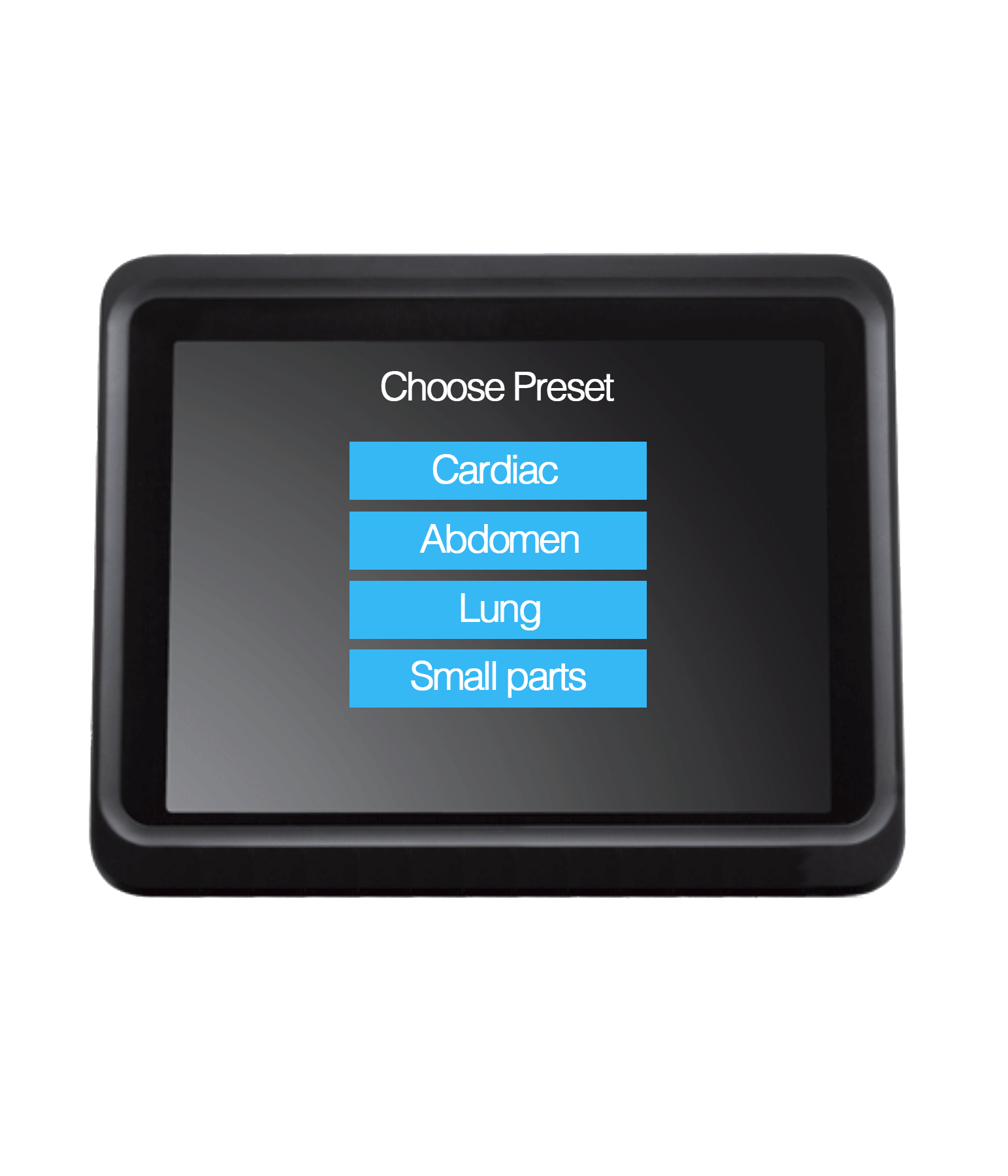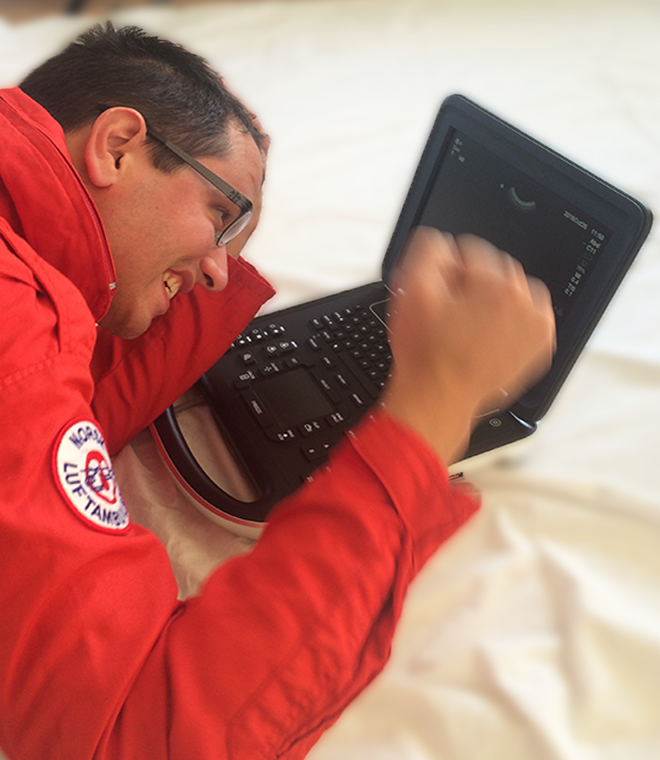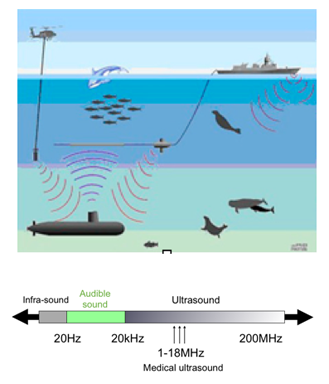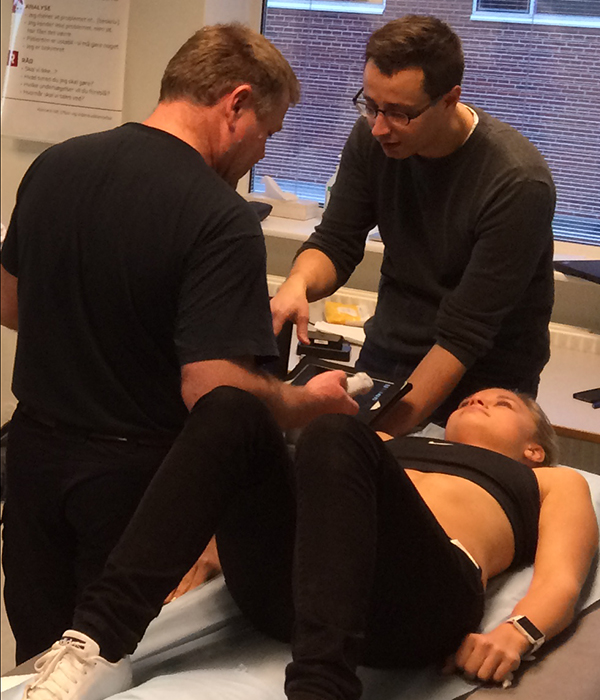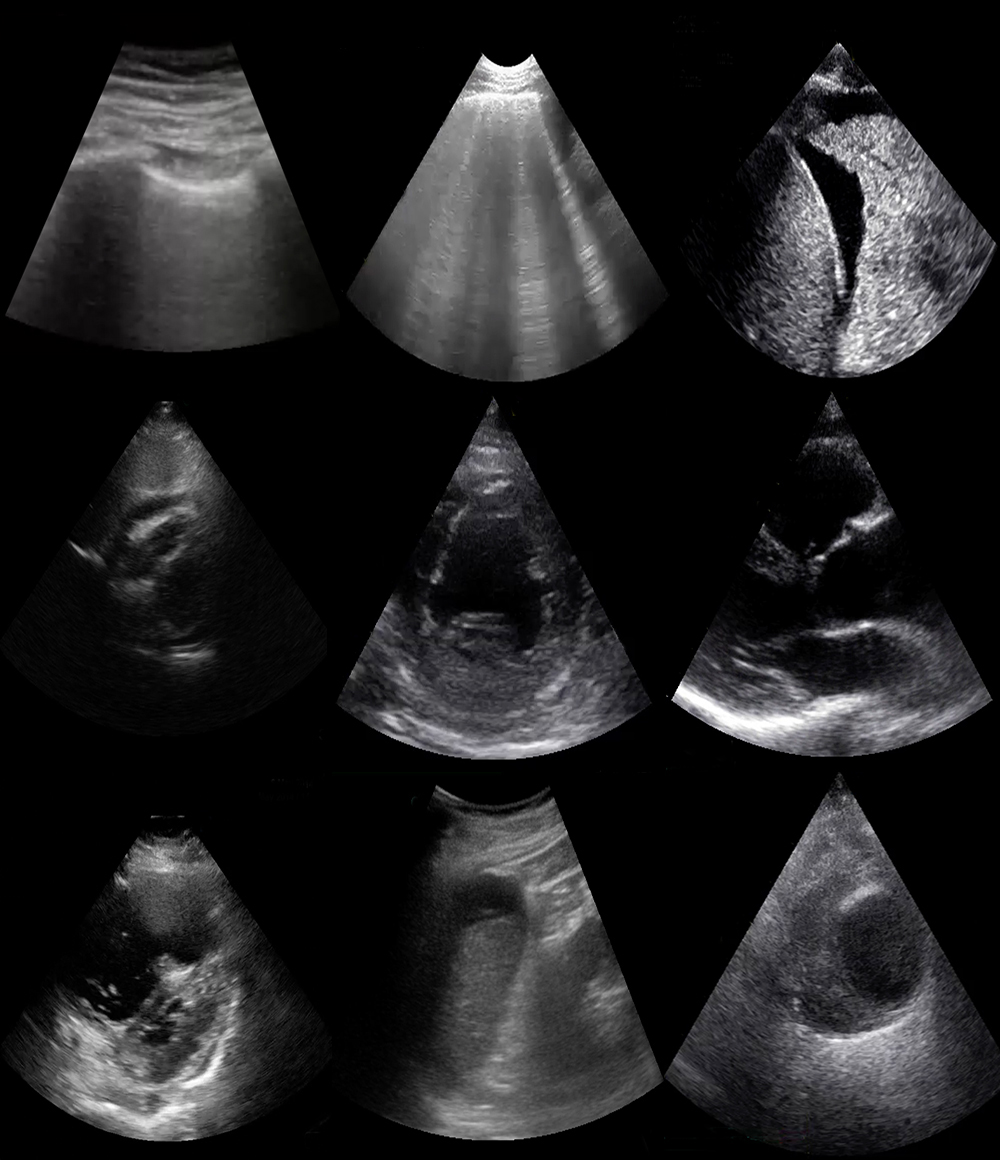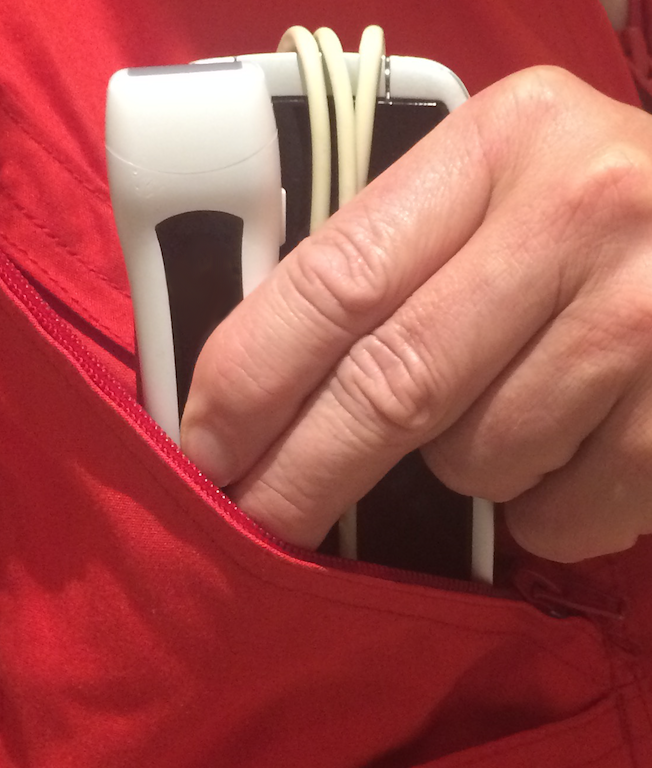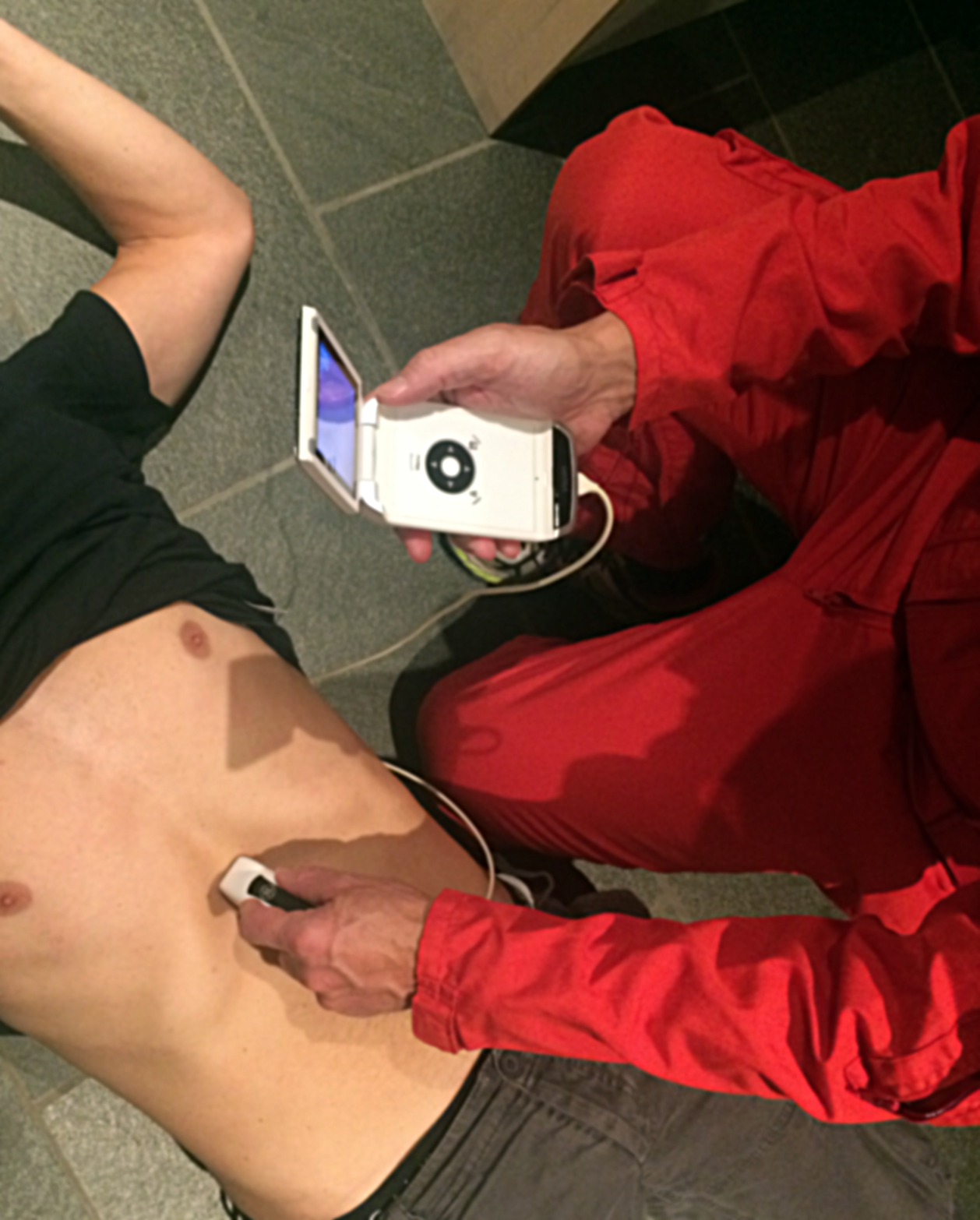Three types of transducers are used in basic emergency ultrasound:
• Linear transducers
• Wide footprint curved abdominal transducers
• Smaller footprint cardiac transducers
Transducer characteristics, such as frequency, determine the ultrasound image quality.
Linear transducers are high frequency transducers suitable for visualisation of superficial structures like the pleural line and peripheral vessels.
A low-frequency transducer like the curved abdominal transducer is suitable for better penetration of tissues in the abdominal and thoracic cavity.
The cardiac transducers are especially designed to visualise the moving heart and are also suitable for assessing pleural fluid.
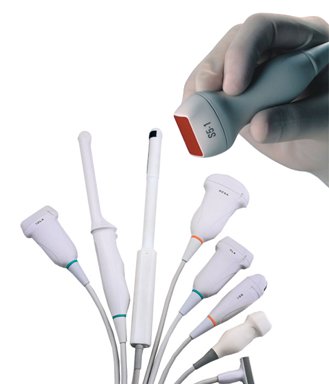
The hand is holding the preferred transducer type for cardiac examinations

